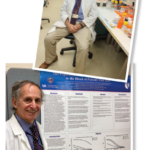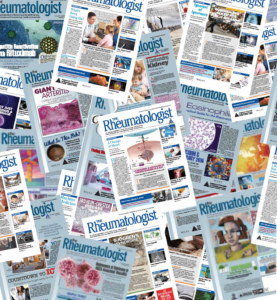 The Rheumatologist (TR) premiered in 2006, with its first full year of publication in 2007. In the 15 years since, it has sought to provide clinicians, researchers and healthcare providers with the most stimulating and educational content found in the field of rheumatology. The responsibility for achieving this mission has been borne by just three physician editors over the past decade and a half, and their insights and experiences with respect to how TR has evolved over these years are enlightening.
The Rheumatologist (TR) premiered in 2006, with its first full year of publication in 2007. In the 15 years since, it has sought to provide clinicians, researchers and healthcare providers with the most stimulating and educational content found in the field of rheumatology. The responsibility for achieving this mission has been borne by just three physician editors over the past decade and a half, and their insights and experiences with respect to how TR has evolved over these years are enlightening.
The Launch
David S. Pisetsky, MD, PhD, professor of medicine and immunology, Duke University School of Medicine, Durham, N.C., was the founding physician editor of TR. He had previously served as editor in chief of the ACR journal Arthritis & Rheumatism (since renamed Arthritis & Rheumatology), and he was excited to bring his experience as an editor to the news-magazine format.
Dr. Pisetsky appreciates the considerable latitude and discretion he was given to help shape TR. “So much science writing is bland and fails to do justice to the exciting and glorious data that it seeks to describe from scientific and clinical research,” he says. To illustrate this point, he points to an essay he wrote a few years ago about a hypothetical World Series contest as it might appear in a prestigious medical journal, with the writer reporting “with the detachment, rationality and style demanded of a scientist, the drama and feverish excitement of one of the great happenings of American sports.” (See https://blogs.scientificamerican.com/guest-blog/science-at-the-plate.) With TR, he wanted to create a periodical that would be accessible, interesting and relevant.
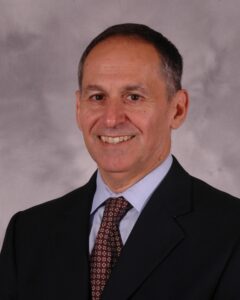
Dr. Pisetsky
Because most readers of TR were expected to be practitioners in the field of rheumatology, the clinical aspects of rheumatic disease and commonly encountered office issues in clinical practice were some of the main topics Dr. Pisetsky hoped to cover. For clinical topics, he notes that he has always been a proponent of well-done review articles, and TR offered a unique opportunity to showcase specific forms of this genre of medical writing. Whereas a review article for a medical journal may require hundreds of references and take months to compose, Dr. Pisetsky hoped to publish review articles that were readable, relevant, timely, and allowed writers to express their own expert opinions, using data to guide their perspectives but not get lost in the minutiae of each topic.
Dr. Pisetsky hoped that by giving clinicians the opportunity to express their views on important topics and by not making the task of writing articles too onerous, he could recruit top-notch experts to write for TR. Indeed, this is what occurred, and he was pleased both by the caliber of physician writers who contributed to TR and the response these articles received from readers, who provided positive feedback on these pieces.
Without a background in art or design, Dr. Pisetsky found it both a challenge and a thrill to work on the aesthetic presentation of articles and graphics for the publication.
“Illustrating articles is hard,” notes Dr. Pisetsky, and literally millions of available images exist that can be used for any given topic. The editorial staff was charged with the task of selecting the best images and graphics. Dr. Pisetsky had several goals with regard to illustrating articles, including making the layout and visual representation engaging, avoiding repetition of images and giving each article a wow factor. He would sometimes spend one or two hours looking at potential graphics for each major article. The process was sometimes tedious and difficult, but Dr. Pisetsky recalls it as a labor of love that allowed him to be creative and collaborate with the editorial and graphics staff.
In addition to being proud of the illustrative presentation of the publication, Dr. Pisetsky also enjoyed the opportunity to write a monthly column on a topic of his choice. “It was a very different way to look at the world,” he says. He frequently found himself—in the office, at Grand Rounds, on family outings—thinking about what would make for a good column. He enjoyed being both thoughtful and humorous, seeking to find topics that were thought provoking but also allowed readers to see the somewhat comical and joyous aspects that make medicine fun.
Moving the Legacy Forward
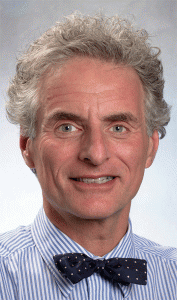
Dr. Helfgott
After Dr. Pisetsky’s five-year tenure as physician editor of TR came to a close at the end of 2011, he was succeeded by Simon M. Helfgott, MD, associate professor of medicine, Division of Rheumatology and Immunology, Harvard Medical School, Boston. Dr. Helfgott had been an avid reader of TR since its inception and he loved that the ACR had thought to create a clinically oriented publication that would provide first-rate discussions of topics germane to clinicians.
Dr. Helfgott explains that, when he started his tenure as physician editor in 2012, his top priority was to create issues full of well-written pieces that touched on topics near and dear to the hearts of all members of the rheumatology community. Initially, most readers expected to receive these articles via hard copies of the publication through U.S. mail, but by the end of his tenure, the focus had shifted and the articles were also being made available via the web.
Despite the popularity of the publication, Dr. Helfgott recalls that it was often challenging to recruit writers for articles. As he explains, “It takes time to write a thoughtful piece,” and in the world of academic medicine, time is a precious commodity.
Articles in TR are not cataloged in PubMed and do not count as a research paper on a clinician-researcher’s CV, thus the time it takes to contribute to the publication is time not spent writing grants, conducting research studies, teaching or performing the myriad other activities necessary for career advancement and simply must get done.
Over time, Dr. Helfgott did receive more excellent unsolicited submissions, making it far less challenging to assemble each issue. Just as Dr. Pisetsky enjoyed the opportunity to write a monthly column, so too did Dr. Helfgott relish this role. However, he explains, one must be organized and diligent to keep up with the demands of a monthly column, especially if that person (like Dr. Helfgott) hopes to continue life as a clinician, educator, fellowship program director, and husband and father. By the sixth year of his tenure, Dr. Helfgott was writing about six weeks ahead of schedule. He found the best time to write was on flights, and at the time he was traveling a great deal. He would often put on his headphones and just get things done.
Dr. Helfgott is proud that he never missed a deadline, and he specifically thanks Wiley, the ACR’s publishing partner, and Keri Losavio, editor of TR since 2014, for their outstanding work and assistance.

Ms. Losavio
Dr. Helfgott enjoyed hearing from readers about their response to his editorials. For his columns, he notes that the readership included many people whom he greatly respects and admires. Dr. Helfgott also notes that one of the best comments came from a rheumatology fellow in the Brigham and Women’s training program, who mentioned that his father—a hematologist—regarded TR as great bathroom reading material. “I take that as a huge compliment,” says Dr. Helfgott.
He also notes that much enjoyment was derived from receiving and publishing presentations of clinical cases from rheumatology fellows across the country. Dr. Helfgott sought to make these more regular features of the publication and, although it took a while to get things started, this became easier over time. He is pleased that TR served as a venue for these types of articles from fellows since few opportunities to publish in this fashion exist in medicine, and readers expressed that they enjoyed these case presentations.
In looking back on his tenure as physician editor and his overall career in medicine, Dr. Helfgott has several words of wisdom. He states that, if one is interested in editing, it is important to get involved with every possible opportunity that arises in that arena. For Dr. Helfgott, this started with work on UpToDate, which was founded by Dr. Bud Rose and remains highly regarded to this day. In a more informal manner, Dr. Helfgott also credits helping his three children with their homework as important to his maturation as an editor.
“I was responsible for editing their essays for school,” he recalls, “and I learned to focus on getting the point across while being concise and succinct.” In his free time, Dr. Helfgott has always enjoyed reading historical fiction as well as great works of literature, and he notes there is so much to be learned from even casual exposure to great writers.
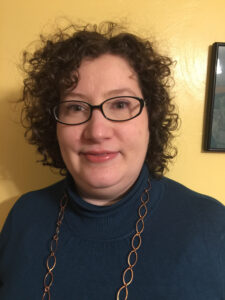
Ms. Antoline-Wang
Both Dr. Pisetsky and Dr. Helfgott credit being a part of an amazing team of colleagues as key to their success, and that team deserves recognition. Dawn Antoline-Wang was the editor of TR from 2005 until 2014 and worked closely with Dr. Pisetsky and Dr. Helfgott; she is still with Wiley as the editorial director of the business-to-business group of magazines that TR is a part of. Liliana Estep has served as the magazine’s designer since the launch of the publication, and the ACR staff contacts are Joan Roth and Rachel Whittaker.
As mentioned above, Keri Losavio has served as editor since 2014 and has also seen the publication evolve and flourish over time. Ms. Losavio’s background includes editing emergency medicine publications, and she also wrote for The Hospitalist and Caring for the Ages. From 2014 to the present time, she notes one significant change has been the introduction of e-newsletters. The electronic table of contents (eTOC) has been a longtime staple. But the introduction of several other regularly deployed e-newsletters has been evolving since 2015. These include eNewsRheum, ACR@Work, FocusRheum, ExamRheum and Best of Meeting emails. She adds that more content is now published online first. Ms. Losavio is proud of the fact that, in 2022, five standalone editorial supplements, covering a range of topics, have been published, and that the quality and quantity of articles continues to increase.
Ms. Losavio notes that challenges remain, such as how to balance content appropriately to meet the needs of both ACR and ARP members. She says reaching members how and when they desire is key as well, and that TR will continue to adapt to meet these wishes. More adaptations to electronic needs will likely be added, in the form of e-newsletters, virtual presentations, video e-talks and so forth.
Philip Seo, MD, MHS, has served as the third physician editor to date. His term ends with this issue, and Bharat Kumar, MD, MME, FACP, FAAAAI, RhMSUS, stands ready to pick up the reins with the January 2023 issue of the magazine.
As Ms. Losavio states, “The need for data, research and presentation of resources remains.” It is the mission of The Rheumatologist to continue to make this information available to thousands of readers and, with the ongoing leadership of the editorial staff, the future is bright for the magazine.
Jason Liebowitz, MD, completed his fellowship in rheumatology at Johns Hopkins University, Baltimore, where he also earned his medical degree. He is currently in practice with Skylands Medical Group, N.J.
